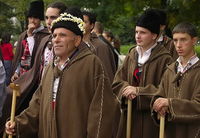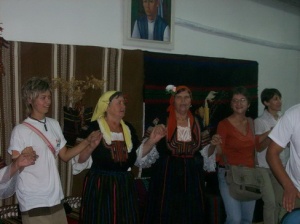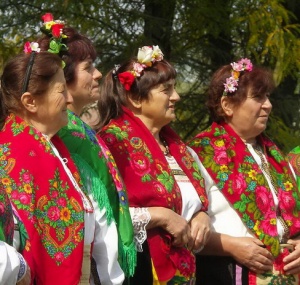Living Heritage Bulgaria
|
Short Description
The Living-Heritage (LH) Programme, developed by WCIF, is based on the idea that cultural projects can provide a strong focus for local cooperation including inter-ethnic and community action. Such initiatives are effective as they deal with things that locals usually care deeply about and, at the same time, are within their control and capacity. The programme is built on a number of principles:
- celebrating local distinctiveness
- demonstrating local benefit
- validating local experience
- recognising local vision and leadership
- supporting voluntary commitment
- planning sustainable development
- nurturing good media relations
The programme adopted a broad definition of the concept “cultural-historical heritage”. Local people were allowed to determine themselves what their valuable heritage is and in what shape they want to preserve and develop it.
Local project activities
Three local projects and a national festival became part of the project “Everybody’s Song”. All projects were using local musical heritage for social development and the improvement of communication and relationships between generations and different cultural and ethnic groups in the communities.
Financial resources were provided to three grass-roots groups for activities in exploring, reviving and preserving the Bulgarian material and spiritual heritage. The groups came from Dupnitsa, Dobrich and Haskovo.
Their projects were diverse in terms of methodology and the heritage they revived:
- Dupnitsa: youth musical festival and drum lessons for teenagers
- Dobrich: CD with authentic Christmas carols from Dobrudja region, together with a special book with explanations and musical notations of the carols
- Haskovo: music workshops and a local event presenting the traditional production of ritual breads for Christmas and Bayram (Orthodox and Muslim holidays).
National Festival
A Living Heritage Festival was organised on September 22nd, 2007 in Sofia. Apart from representatives of the above groups guests were invited from places where WCIF has previously worked. They also had the opportunity to present their dances, folklore rituals, etc. Sofia Municipality became WCIF’s partner for the festival. The festival was unique, as for the first time in the organisation of such an event in Sofia the concept of learning-by-doing was introduced. The participants trained the visitors in bread making, knitting, the production of dolls, drum playing, etc. Visitors could also see authentic rituals and crafts in the improvised fair. At the end of the festival day, a film about the participants and the project activities was shown.
Output
The output of the programme in Bulgaria is manifold and varied, including festivals, publications, documentaries, CDs etc. The figures below give some indications of the extent of the work produced:
- more than 1,000 people directly involved
- more than 1,500 volunteers
- more than 300 people performing on stage, more than half of them young people
- more than 50 musicians involved
- more than 15,000 indirect beneficiaries
- more than 100 pieces of news and interviews
- more than 5 events organised locally and nationally
- more than 5,000 visitors of the national festival
During the project we had more than 10 publications in the national media, including radio and national TV. The project was presented in different regional media; some local cable televisions broadcasted whole events organized by local participants.
These figures represent only one part of the work undertaken. The programme supported both community development and personal development. It helped those involved to build their own capacity, experience and confidence. A range of important skills were acquired and improved:
- The project teams gained new competencies in project development and planning, professional cultural skills, organisational management, fundraising and financial management, monitoring, evaluation, reporting, teamwork, partnership building, working with volunteers, media, marketing and PR, etc. They were the catalysts of change.
- The local community members improved their skills in specific areas or gained new ones, such as singing, drum playing, bread production and many other competencies. Their commitment was central to each of the three local projects.
The most obvious effects of the programme are: the participants’ boosted self-esteem, satisfaction with the opportunity for expressing oneself and being creative, acquired knowledge and new skills, built intercultural tolerance, new contacts between people, strengthened ties between ethnic and religious groups and generations, improved community relations in ethnically or religiously diverse communities, stimulated interest in cultural heritage and improved appreciation of the local communities.



